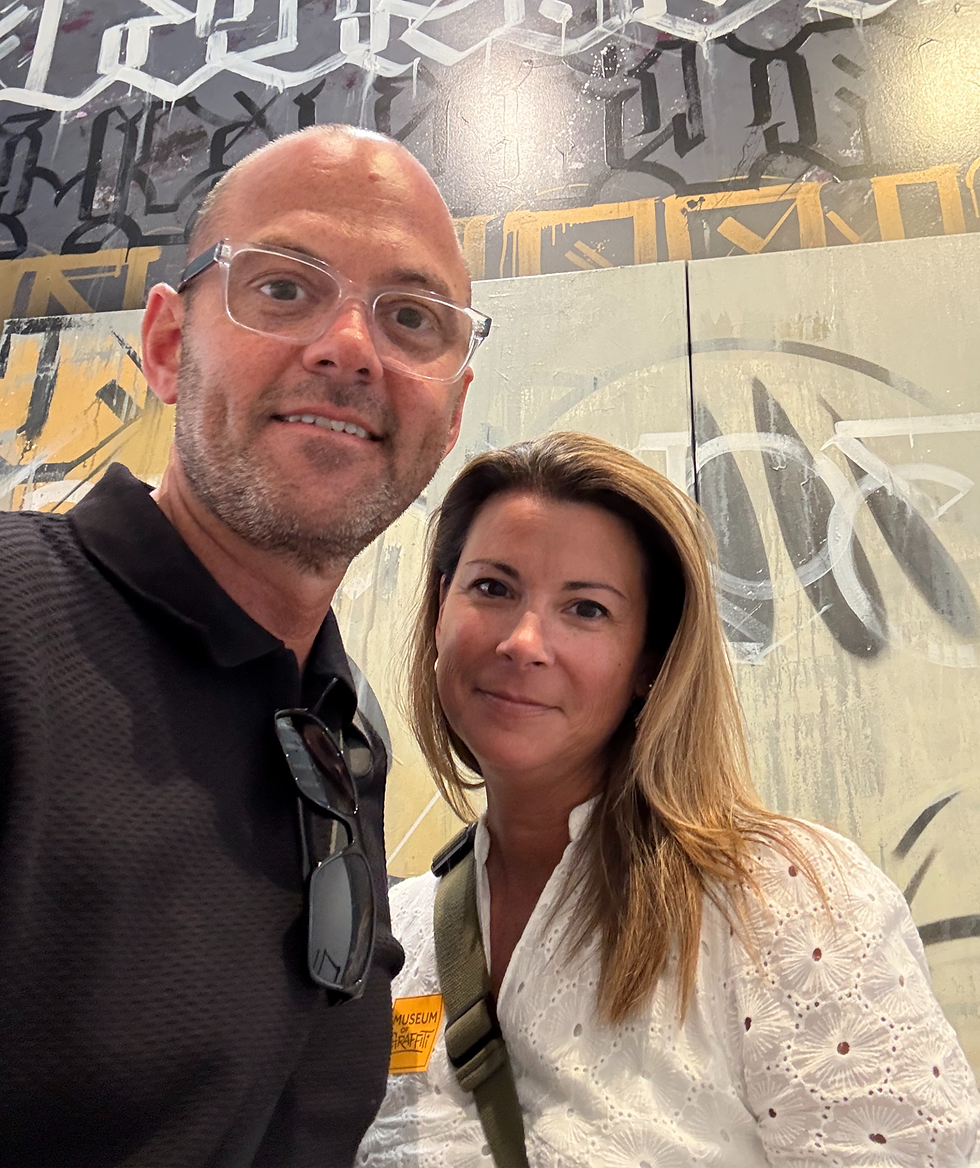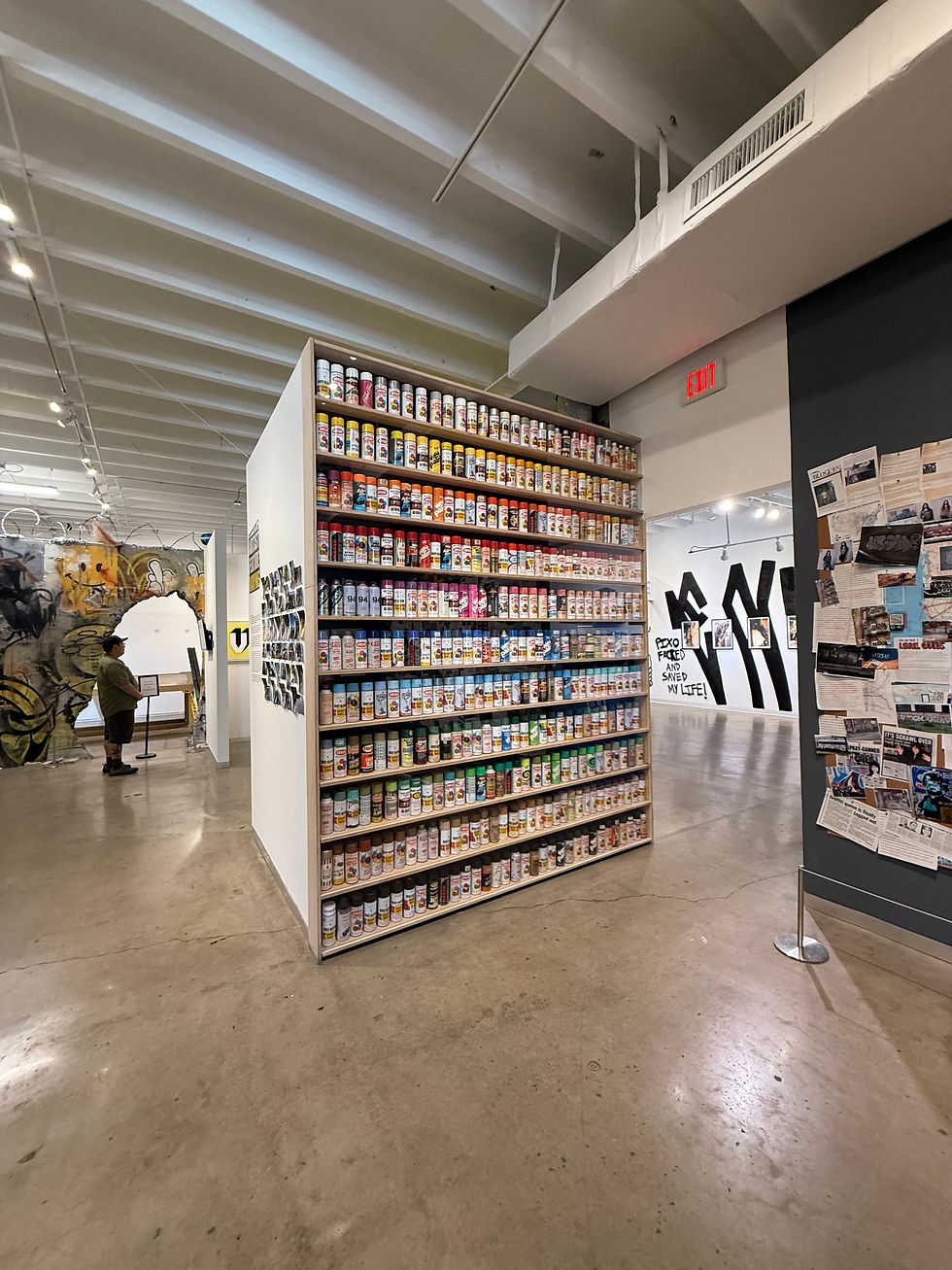Wynwood Walls, Neon Nights, and Graffiti Dreams
- jason03631
- Jul 11
- 3 min read
How a quick trip to Miami turned into a full-on creative recharge
There’s something about Miami that never plays it safe. It’s loud in all the right ways — the colors, the energy, the layers of culture stacked on every corner. But on this trip, I wasn’t there for the beach or the nightlife. I had one destination in mind: Wynwood, the beating heart of Miami’s street art scene. And one museum that’s been sitting on my must-visit list for years: the Museum of Graffiti.
Spoiler: It did not disappoint.


Landing in Wynwood: A Street Art Playground
The minute you step into Wynwood, your senses are on full alert. The buildings aren’t just painted — they’re screaming with personality. Giant murals wrap around warehouses. Alleyways become galleries. Even the dumpsters feel curated. Every surface is fair game. It’s raw and chaotic, but somehow incredibly intentional.

I must’ve taken 200 photos before I even found my coffee. (Shout out to Panther Coffee — strong enough to keep you walking in 90% humidity with a grin.)
What struck me most? The sense of permission. In Wynwood, art isn’t contained — it’s embedded into the fabric of the neighborhood. There’s no “off-limits.” That mindset alone is fuel for any creative.
Gallery Hopping and Happy Discoveries
Wynwood isn’t just about street art. There’s a deep layer of contemporary and modern gallery work tucked between the murals and breweries. I stopped into a few standout spaces like Wynwood Walls Gallery, Oliver Cole Gallery, and a tucked-away studio that was showcasing emerging Latin American artists.
There’s something exciting about seeing high-gloss canvas work next to a graffiti-tagged sidewalk. It reminded me that good art doesn’t care where it’s shown. It just wants to be seen.
Museum of Graffiti: A Masterclass in Street Culture
I’ll be honest — the Museum of Graffiti was the highlight of the trip. It’s part art museum, part cultural archive, and part punk rock time machine. You walk through the origins of graffiti — from its roots in NYC subway cars to global recognition — and realize just how deep this art form runs.

It’s easy to dismiss graffiti as decoration or rebellion. But this place gives it historical context. You see how artists evolved, how styles migrated, and how much social commentary is embedded in those spray-painted strokes.
One wall featured early blackbook sketches from legendary taggers. Another showed the evolution of lettering from bubble fonts to razor-sharp wildstyle. It was like flipping through a visual diary of an entire movement.
How Graffiti and My Art Speak the Same Language
As I wandered through the exhibits, I found myself nodding a lot — not just in admiration, but in recognition.
Much of my own work leans into cartoon-like characters, bold outlines, and expressive simplicity. I’ve always gravitated toward thick black lines and exaggerated features. It’s my way of making things pop — of telling a story that hits you before you even process it.

That’s what graffiti does too. It demands attention, often in places where people aren’t looking for art. It uses contrast and character as its loudest tools. Even though I’m working on canvas or digital formats, I felt a real kinship with those spray-can storytellers.
We both play with color, character, and edge. We both build emotion with exaggeration. We both refuse to whisper.
Takeaways from the Trip (Besides Way Too Many Photos)
Miami gave me exactly what I didn’t know I needed: a creative jolt. A reminder that art doesn’t have to be polished to be powerful. That it’s okay to be loud. That boldness leaves a mark.
If you’re headed to Miami and want to skip the usual tourist routes, Wynwood is the move. Go see the murals, hop into the galleries, and absolutely make time for the Museum of Graffiti. You’ll leave full — of ideas, of energy, of maybe a few paint fumes — but full in the best way.


